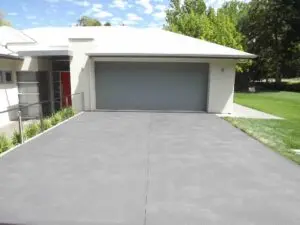When comparing concrete and wood steps, the upfront cost of wood may be lower, but concrete proves to be the more cost-effective choice in the long run. Concrete steps last longer, require less maintenance, and resist weather damage better than wood, making them a durable and worthwhile investment.
In this blog, we’ll guide you through the cost, durability, and benefits of both materials to help you make the best decision. If you’re looking for free consultation, contact the best concrete contractor in Macon, GA.
Top Concrete Steps Services In Macon, GA
Phone: (478) 999-7190
Email: info@concretecontractorsmaconga.com
Breaking Down the Costs
1. Initial Cost
-
Wood: Generally, it costs between $100 – $300 per step, depending on the type used (pressure-treated pine vs. hardwood). Labor and sealing add to the expense.
-
Concrete: The cost ranges from $150 – $500 per step, including labor. While slightly higher upfront, they require minimal maintenance and last decades longer.
2. Maintenance Costs
-
Wood: Requires frequent sealing, staining, or painting to prevent rot, termites, and weather damage.
-
Concrete: Virtually maintenance-free. Power washing every few years keeps them looking new, with minimal costs involved.
3. Lifespan & Durability
-
Wood: Typically lasts 10-15 years, depending on climate and maintenance.
-
Concrete: Can last 40+ years with proper installation. They withstand heavy foot traffic, harsh weather, and moisture exposure.
4. Safety & Stability
-
Wood: Can warp, crack, or rot, creating potential safety hazards.
-
Concrete: Provide a solid, slip-resistant surface with superior load-bearing capacity.
5. Home Value
-
Wood: Often looks great initially but degrades faster, lowering visual appeal over time.
-
Concrete: This can be customized with stamped patterns, textures, and colors, adding to your property’s aesthetic and value.
Why Concrete Steps Are the Best Choice for Your Home
✔️ Low Maintenance
✔️ Weather-Resistant
✔️ Pest-Proof
✔️ Long-Term Cost Savings
✔️ Customization Options
Step-by-Step Process: Building Durable Cement Stairs
Macon Concrete Contractor follows a step-by-step process to deliver high-quality, long-lasting results:
Site Evaluation & Planning
Formwork & Reinforcement
Concrete Pouring
Finishing & Curing
Final Inspection & Cleanup
Frequently Asked Questions (FAQs)
1. Are cement stairs more expensive than wood?
Initially, they may cost slightly more than wood, but they save you money over time due to their durability and low maintenance.
2. Can I customize my cement stairs?
Absolutely! A wide variety of colors, textures, and stamped patterns are available to match your style.
3. How long do cement stairs last?
With proper installation, they can last 40+ years, making them a smart long-term investment.



